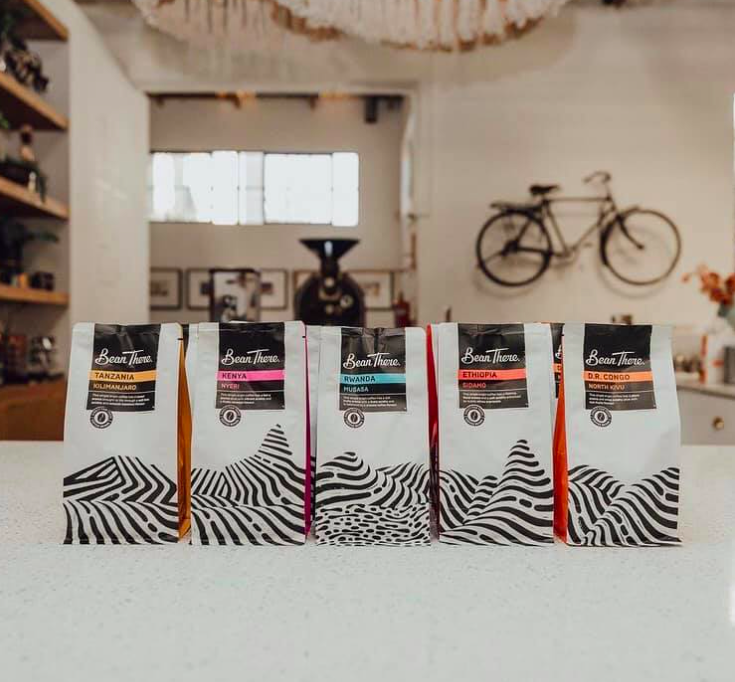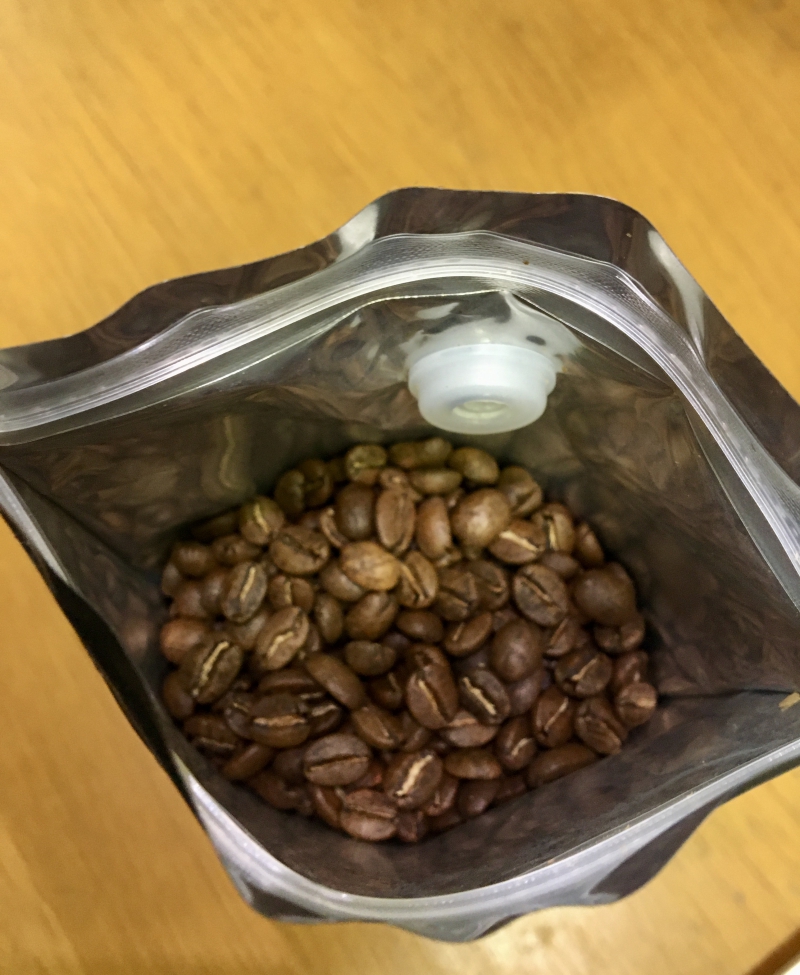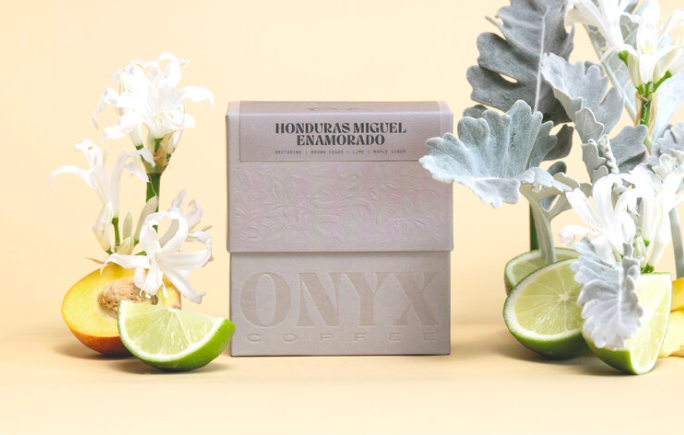In Neil Maree’s monthly column, he explores the importance and detail of the packaging your freshly roasted coffee beans come in.
Don’t you just love opening a new pack of speciality coffee?
It almost becomes a ritual, a crucial part of your coffee drinking experience.
The way the packaging feels; the sneak whiff through the valve (we all do it); the specific way you have to open the pack; and then, of course the explosive aroma that fills the room…bliss!
While coffee packaging was once viewed as mainly useful to store and transport a product, packaging design has developed into an important marketing tool. It is often the first contact a customer will have with your brand. It carries your brand identity and emotionally connects with consumers.
If you are a roaster, I suggest you take a closer look at your own packaging and make sure it ticks all the boxes when it comes to the holistic customer experience.
Deconstructing specialty coffee packaging
Speciality coffee packaging has a dual value. On the one hand, it preserves the freshness of your coffee and on the other it has the potential to tell your brand-story in the most appealing way: through the use of shape and material, fonts, images, colour combinations, textures and patterns.
Package design and its sensory aspects impact the customer journey at different stages. For the purpose of this discussion, I will look at speciality coffee packaging from a sensory experience (outer and inner layers) and from a functional dimension (freshness and quality mechanisms).
Sensory Experience
It is said that customers buy packaging based on their first impression of the bag.
Use your packaging to tell your brand story, because people identify with stories. Share yours on your pack and it will be read. Be descriptive. People enjoy information when they are really interested in their subject; as speciality coffee drinkers are. Tell your customer about your brand values, your contribution to transparency and sustainability in the coffee industry. Also use the opportunity to explain flavours and roast profiles. Coffee packaging has an informative, and often an educational role to fulfil.

Try and be original in your design and capture the spirit of our brand. Pay attention to colour as people are psychologically drawn to colour. Colour plays a major role in the success of any marketing campaign. Colours tend to stir certain emotions, creating brand relevance and motivating purchases: red is the colour of power and gets people’s attention and holds it, and green is associated with health, environment and goodwill.
The finishing of your packaging material can add to your customers’ tactile experience of your brand, be it a matte or gloss, or textured and rustic. Keep in mind that finishes such as foil and spot-varnished elements can be very interesting but should be in line with your brand and the message you want to communicate.
With the aim to engage and tell their brand story, speciality coffee roasters often use a five-sided flat bottom pouch which will give them more space. Printing on the interior of the coffee pouch is another way to optimise space. Coffee packaging can therefore be totally customised to attract customers. The challenge is to create visual aesthetics that will translate into perceptions of flavour at an almost subconscious level.
Custom printed packaging has become popular all over the world, and this does not only refer to the exterior of the packaging. The customer experience lingers on throughout the after-purchase stage which can greatly influence the customer’s likelihood to re-purchase or recommend your coffee to others. The customer journey should be considered and maximised. Interior packaging design is an innovative way to extend the brand message and convey the desired perception of the taste of your coffee. Opening a coffee bag is an explosive multisensory experience that can now be amplified even further by your customised interior design.
Own your unique style
Packaging allows you to distinguish yourself from your competitors. Your uniqueness can set you apart from the rest as packaging possibilities are endless. Consider your own distinctive measurements of a shaped pouch, a zipper and valve integrated in your pack, an attractive design, different varnishes, and different colours from neon to metallic. Finally, a label on your pack can communicate different origins and batches, giving you all-year-round flexibility. Be sure that you understand your customer when you design the look and feel of your brand - this includes colours, font styles and sizes. Remember, there is no right type of packaging. Your packaging will be determined by your customer preference, the nature and size of your business, and how your coffee bags are filled. There are various coffee packaging experts that will be able to guide you along.
The ultimate aim for roasters is to set their products apart. A visually appealing package can go a long way in creating positive perceptions about the characteristics of the coffee you are representing.
Functional dimension
The best coffee packaging cannot only be visually appealing, but it also has to be functional. The number one requirement for any coffee packaging is that it should protect your coffee from the moment it leaves your roastery or warehouse.
As consumers are increasingly becoming more discerning coffee drinkers, there has been a growing need to provide fresher, higher quality roasted coffee beans.
The most important aspect of speciality coffee is its aroma and taste, which can be impacted by the packaging. Should the coffee be contaminated by foreign odours, the aroma and taste will be compromised, making it not desirable to drink. It is therefore crucial to choose an effective and high barrier coffee bag to maintain the freshness, flavour and aroma for a longer period of time.
Various types of coffee packaging are manufactured and supplied to specialty coffee roasters. Coffee packaging offers different functional features, including metallic layers, re-sealable zippers, clear oval windows, and one-way degassing valves.

Packaging should protect your coffee and keep out odours
Once your beans have been roasted, they undergo chemical and physical changes that must be taken into account when packaging them. The pore structure of coffee beans is affected by roasting conditions. The bean becomes more porous, the higher the roasting temperature. It then becomes more susceptible to absorbing moisture and unpleasant odours. To prevent this, your packaging should include a barrier that keeps out moisture, odours, direct sunlight, and oxygen, while enabling carbon dioxide (CO2) to escape. While the material you use for the outer layer of your coffee packaging is often determined by your marketing needs, it is the inner layer that needs special attention as it comes into direct contact with the roasted beans.
Barrier properties and the filling process
It is very important that coffee beans stay fresh for as long as possible, and this means that the packaging has to be airtight.
Packaging needs a barrier as coffee is very sensitive to external factors that can affect the profile, through moist and other bacteria. These barriers can range from metalised or pure aluminium to high-barrier polyester. Specialised advice to protect the roasted coffee beans can be provided by packaging manufacturers.
To ensure freshness and for coffee not to become stale faster than it needs to when on its way to your customer or sitting in their coffee shop, one can add a nitrogen flush vacuum sealer to the filling process. This vacuum sealer uses nitrogen gas to replace the oxygen in the bag and then creates a vacuum before sealing your bag of coffee. The absence of oxygen within the packaging helps to extend your coffee’s shelf life as long as the bag remains unopened.
Degassing valve
One of the most important chemical changes in the roasting process is the breakdown of sugars to form various compounds, including carbon dioxide. The carbon dioxide, trapped inside the coffee beans, gradually leaks out after roasting, through a process called degassing.
Sealed coffee bags without a valve usually inflate and can even explode. The function of a degassing valve is to allow the carbon dioxide, released by roasted coffee beans, to escape from the sealed bag. It is designed to be a one-way value. Carbon dioxide will flow out of the bag, but oxygen will not flow into the bag. This mechanism will only work when the bag is thoroughly sealed.
It is of utmost importance that the one-way degassing valve releases carbon dioxide from the coffee bag but do not allow outside moisture or air to penetrate the bag.
Storage
The convenience of your coffee bag can be enhanced with zippers or other easy open mechanisms.
A re-closing feature such as a zipper will make a big difference in the lives of consumers who use and store their coffee beans in the original package – also more opportunity for them to enjoy and appreciated the design of the interior of your coffee package!
Trends that can influence specialty coffee packaging
Sustainable packaging has become very important. These forms of packaging are recyclable and biodegradable. Eco-friendly packaging is normally communicated on the pack, giving a guide on how it should be recycled and the benefits thereof to nature.
If there is one thing millennials around the world have in common, it is a taste for coffee. It is a generation worth taking note of as they make up a large percentage of the world’s coffee drinkers. Looking after our planet is important to them. They demand transparency and good ethics and this is something you should consider throughout the customer journey.
The subscription model is booming and various coffee brands are complimenting their business with a monthly subscription from their customers. Receiving a crafted subscription box will gain massive appeal for your brand. More so now that people are home-bound as a result of the pandemic and have become more comfortable with virtual shopping. You will however, have to do proper research into your potential market, to determine whether there is a gap in the market, and indeed a market in the gap – but surely, it can be very exciting.
Your packaging supplier is there to support you through conceptualising, designing, manufacturing, printing, and delivery your packaging material. This can be a very rewarding relationship as they should keep you abreast of new developments in the packaging industry. It is important to choose an experienced packaging partner you feel comfortable with and whom you can trust with your brand for consistent and superior-quality packaging.
The Specialty Coffee Association, in 2016, launched the annual Coffee Design Awards to honour and showcase the great packaging designs in the speciality coffee industry around the globe. This is a great platform to find new inspiration and keep up with the latest trends and technologies. Onyx Coffee, pictured below, won the 2021 Award for Packaging.

In closing, there are many aspects to consider when it comes to specialty coffee packaging: both in terms of aesthetics and functionality. If you can explore these, you have made good progress in setting up a successful specialty coffee brand.
All of the best in coffee.
Neil